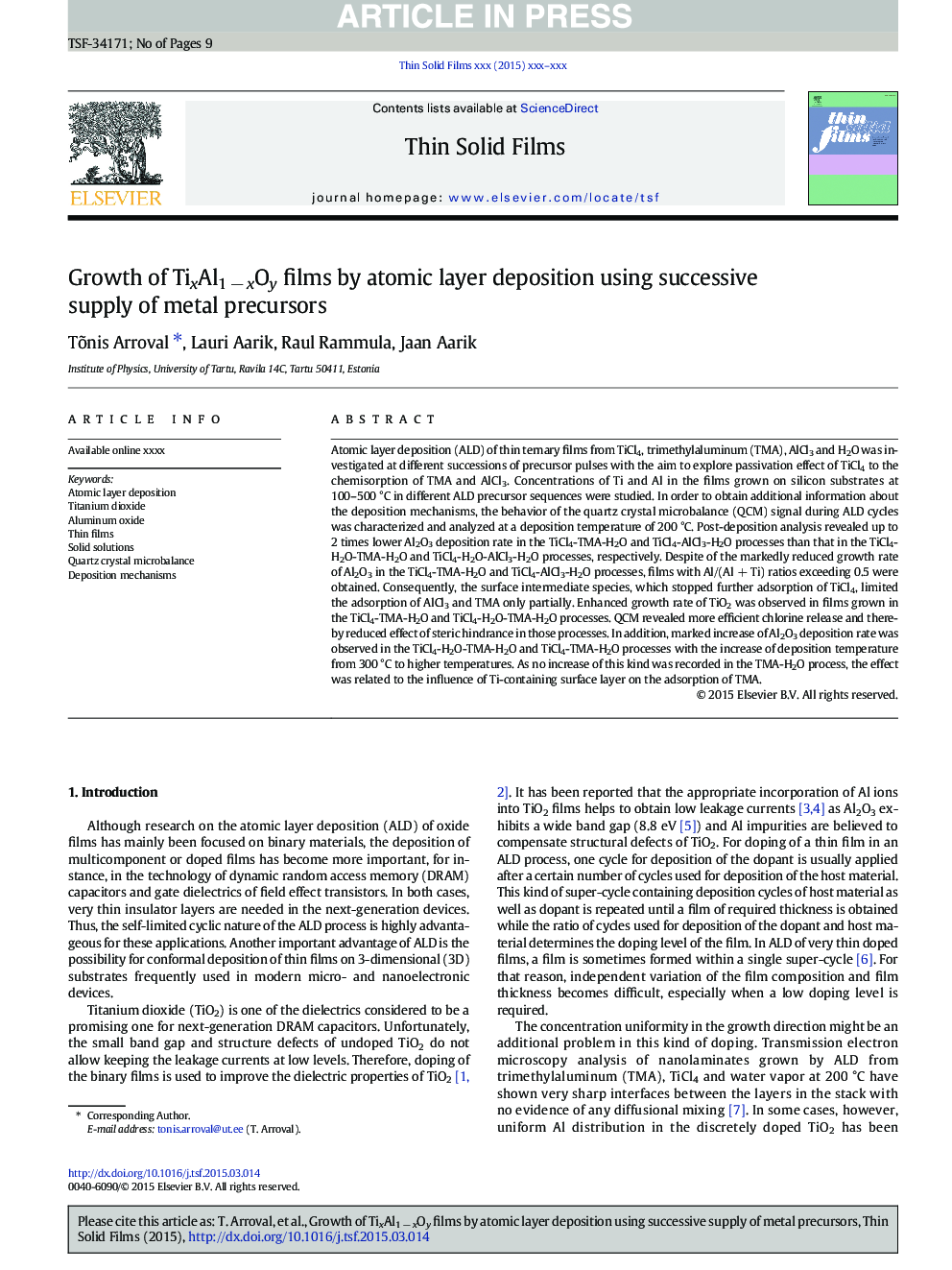| Article ID | Journal | Published Year | Pages | File Type |
|---|---|---|---|---|
| 10669624 | Thin Solid Films | 2015 | 9 Pages |
Abstract
Atomic layer deposition (ALD) of thin ternary films from TiCl4, trimethylaluminum (TMA), AlCl3 and H2O was investigated at different successions of precursor pulses with the aim to explore passivation effect of TiCl4 to the chemisorption of TMA and AlCl3. Concentrations of Ti and Al in the films grown on silicon substrates at 100-500 °C in different ALD precursor sequences were studied. In order to obtain additional information about the deposition mechanisms, the behavior of the quartz crystal microbalance (QCM) signal during ALD cycles was characterized and analyzed at a deposition temperature of 200 °C. Post-deposition analysis revealed up to 2 times lower Al2O3 deposition rate in the TiCl4-TMA-H2O and TiCl4-AlCl3-H2O processes than that in the TiCl4-H2O-TMA-H2O and TiCl4-H2O-AlCl3-H2O processes, respectively. Despite of the markedly reduced growth rate of Al2O3 in the TiCl4-TMA-H2O and TiCl4-AlCl3-H2O processes, films with Al/(Al + Ti) ratios exceeding 0.5 were obtained. Consequently, the surface intermediate species, which stopped further adsorption of TiCl4, limited the adsorption of AlCl3 and TMA only partially. Enhanced growth rate of TiO2 was observed in films grown in the TiCl4-TMA-H2O and TiCl4-H2O-TMA-H2O processes. QCM revealed more efficient chlorine release and thereby reduced effect of steric hindrance in those processes. In addition, marked increase of Al2O3 deposition rate was observed in the TiCl4-H2O-TMA-H2O and TiCl4-TMA-H2O processes with the increase of deposition temperature from 300 °C to higher temperatures. As no increase of this kind was recorded in the TMA-H2O process, the effect was related to the influence of Ti-containing surface layer on the adsorption of TMA.
Keywords
Related Topics
Physical Sciences and Engineering
Materials Science
Nanotechnology
Authors
Tõnis Arroval, Lauri Aarik, Raul Rammula, Jaan Aarik,
